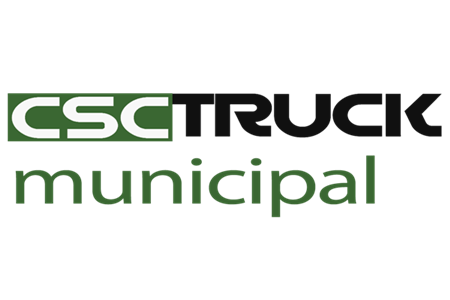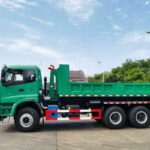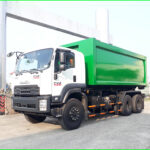In the world of waste management, innovation often comes in the form of incremental improvements—better hydraulics, stronger compactors, or more efficient routing software. But occasionally, a design emerges that fundamentally changes how waste is collected. The self-tipping garbage truck represents one such breakthrough, combining autonomous functionality with mechanical simplicity to create a system that reduces labor, minimizes physical strain, and accelerates collection cycles. Unlike traditional rear loader garbage trucks that require manual bin handling or hook loader garbage trucks designed for container swaps, self-tipping models feature an integrated mechanism that lifts and empties standard bins without human intervention. This article explores the engineering behind these unique vehicles, their operational advantages, and the specific scenarios where they outperform conventional waste collection methods.
1. The Mechanics Behind Self-Tipping Technology
At first glance, a self-tipping garbage truck may resemble a standard side loader, but its defining feature lies in how it interacts with waste containers. Rather than relying on an articulated arm or manual labor, these trucks use a semi-automated lift-and-tilt system that engages specially designed bins.
Key Components of the Self-Tipping Mechanism
- Guided Bin Engagement: A set of retractable forks or rails slide beneath the bin’s lifting bars, securing it before elevation.
- Controlled Hydraulic Tipping: Once locked in place, the system tilts the bin at a 110- to 130-degree angle, ensuring complete waste ejection without abrupt shaking.
- Anti-Spill Safeguards: Sensors detect improper bin alignment and halt operation if a load imbalance could cause debris scatter.
How It Differs from Conventional Systems
- Unlike rear loader garbage trucks, which require workers to physically dump bins into a hopper, self-tipping models automate the entire process.
- Compared to hook loader garbage trucks, which are designed for large commercial containers, self-tippers excel at handling residential wheeled bins with minimal infrastructure changes.
This blend of automation and simplicity makes them particularly effective in municipalities transitioning from manual to semi-automated waste collection.
2. Operational Advantages in Real-World Deployments
The true value of a self-tipping garbage truck becomes apparent when examining its performance in daily operations.
Labor Efficiency and Worker Safety
- Single-operator functionality eliminates the need for additional crew members, reducing payroll costs by up to 40% compared to traditional rear loaders.
- Reduced repetitive motion injuries, as workers no longer need to lift heavy bins manually—a leading cause of long-term disability in waste management.
Route Optimization and Fuel Savings
- Faster cycle times: A self-tipping system can service a bin in 8–12 seconds, nearly twice as fast as manual loading.
- Continuous movement: Unlike hook loader garbage trucks, which require full stops for container swaps, self-tippers can perform rolling pickups in low-speed zones.
- Lower fuel consumption: Reduced idling and optimized load distribution improve miles per gallon by 12–15% over conventional models.
Reduced Container Wear and Tear
- Gentler dumping motion compared to the abrupt shaking of some automated side loaders extends bin lifespan by 30–50%.
- No grabber arm abrasion, which often damages bins over time in fully automated systems.
These benefits make self-tippers ideal for suburban neighborhoods, small towns, and private communities where standardized bins are already in use.
3. Limitations and Ideal Use Cases
While self-tipping garbage trucks offer compelling advantages, they are not universally applicable.
Where They Excel
- Low- to medium-density residential areas with uniform bin placements
- Communities with aging sanitation workers needing reduced physical strain
- Private waste contracts (apartment complexes, business parks) with controlled bin types
Where They Fall Short
- High-density urban cores with limited curbside space for bin alignment
- Bulk waste collection, where items exceed standard bin capacities
- Non-standardized containers, which cannot interface with the tipping mechanism
In these scenarios, a rear loader garbage truck (for bulk items) or hook loader garbage truck (for commercial dumpsters) may still be necessary.
4. The Future of Self-Tipping Systems in Waste Fleets
As automation and smart city initiatives expand, self-tipping garbage trucks are evolving with new technologies.
Emerging Innovations
- AI-assisted bin detection for perfect alignment even in poor visibility
- Hybrid electric drivetrains cutting emissions while maintaining hydraulic performance
- Blockchain-enabled waste tracking, where bins transmit fill-level data before collection
Fleet Integration Strategies
Many municipalities now deploy self-tippers alongside rear loader garbage trucks (for bulk pickup) and hook loader garbage trucks (for construction debris), creating a balanced waste management ecosystem.
By blending automation with operational flexibility, the self-tipping garbage truck has carved out a unique niche—one that prioritizes efficiency, worker well-being, and adaptability in an industry where every second and every dollar counts.







